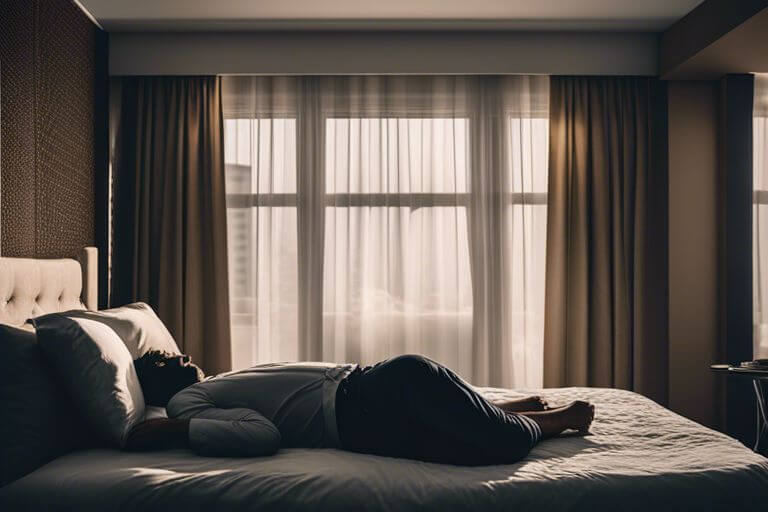Socioeconomic Status and Sleep – Connecting Wealth, Health, and Insomnia
With socioeconomic status playing a crucial role in shaping various aspects of our lives, its impact on sleep quality cannot be overlooked. Research has shown a clear correlation between wealth, health, and insomnia, revealing how one’s financial standing can directly affect their ability to get a good night’s rest. Understanding this connection is crucial for addressing the disparities in sleep patterns among different socioeconomic groups and implementing effective interventions to improve overall public health.
Understanding Socioeconomic Status (SES)
Defining SES: Income, Education, and Occupation
Occupation, income, and education are the three primary factors that collectively define socioeconomic status (SES). Occupation refers to the type of job an individual holds, which can indicate their social standing and level of income. Income measures the financial resources available to an individual or household, while education reflects the level of formal schooling completed. These three components are interlinked and play a crucial role in determining one’s SES.
How SES Influences Health Outcomes
One’s socioeconomic status significantly influences their health outcomes. Higher SES individuals tend to have better access to healthcare, healthier lifestyle choices, and less exposure to environmental stressors. Conversely, lower SES individuals often face barriers to healthcare, higher levels of chronic stress, and limited resources for healthy living. Disparities in SES contribute to stark variations in health outcomes, with individuals of lower SES experiencing higher rates of chronic conditions, such as diabetes, cardiovascular disease, and obesity.
Defining the relationship between SES and health outcomes is crucial in addressing health disparities and promoting equitable access to healthcare services. Understanding these connections can help inform policies and interventions aimed at improving overall health outcomes for disadvantaged populations.
Exploring the Link Between SES and Sleep Patterns
Sleep Quality and Quantity Among Different SES Groups
Groups with different socioeconomic statuses often experience disparities in both the quality and quantity of their sleep. Research indicates that individuals from lower SES backgrounds tend to have poorer sleep quality and shorter sleep duration compared to those from higher SES groups. Factors such as financial stress, lack of access to healthcare, and unstable living conditions can contribute to sleep difficulties among individuals with lower socioeconomic status.
The Role of Stress and Environment in Sleep Disparities
Any examination of sleep patterns across socioeconomic groups must consider the impact of stress and environmental factors. Stress related to job insecurity, discrimination, and other socioeconomic challenges can lead to sleep disturbances. Additionally, living in noisy or unsafe neighborhoods can disrupt sleep patterns, further exacerbating disparities in sleep quality and duration.
A deeper understanding of how stress and environmental factors contribute to sleep disparities is crucial for developing interventions to improve sleep health among individuals from lower socioeconomic backgrounds. Addressing these issues can help alleviate the negative impacts of socioeconomic status on sleep and promote overall well-being.
Insomnia: A Symptom of Inequality
Prevalence of Insomnia Across Socioeconomic Strata
With our deep explore the relationship between socioeconomic status (SES) and sleep, it is evident that insomnia is not exempt from this connection. Research consistently shows that individuals from lower socioeconomic strata are more likely to experience insomnia compared to those from higher socioeconomic backgrounds. Factors such as financial stress, lack of access to quality healthcare, and unstable living conditions contribute to this disparity.
Intervention Strategies to Mitigate SES-Related Sleep Issues
SES-related sleep issues require tailored intervention strategies to bridge the gap in sleep quality among different socioeconomic groups. It is crucial to address the root causes of sleep disparities, including income inequality, lack of affordable housing, and limited access to mental health services. Early identification and intervention can significantly improve sleep outcomes for individuals in lower SES brackets, ultimately reducing the risk of associated health complications.
Policy Implications and Solutions
Improving Sleeping Conditions in Low-SES Communities
Implications of poor sleep in low socioeconomic status (SES) communities are significant, exacerbating existing health disparities. Providing access to adequate housing, reducing noise pollution, and addressing safety concerns can all contribute to improving sleeping conditions in these underserved areas. Implementing community programs that offer education on sleep hygiene and relaxation techniques can also empower individuals to take control of their sleep health.
National and Local Initiatives for Better Sleep Health
National and local governments play a crucial role in promoting better sleep health for all individuals. It is necessary for policies to prioritize sleep education in schools, workplace wellness programs, and healthcare settings. By investing in research on sleep disorders and promoting accessible treatment options, governments can work towards reducing the burden of insomnia and other sleep-related issues on society.
To wrap up
Taking this into account, it is evident that there is a strong correlation between socioeconomic status and sleep quality. Wealthier individuals tend to have better access to resources that promote good sleep hygiene, leading to improved health outcomes. On the other hand, individuals from lower socioeconomic backgrounds are more prone to experiencing inadequate sleep and insomnia, which can contribute to various health issues. It is crucial for policymakers and healthcare providers to address these disparities and implement strategies to ensure that everyone has equal opportunities to achieve optimal sleep and overall well-being.

